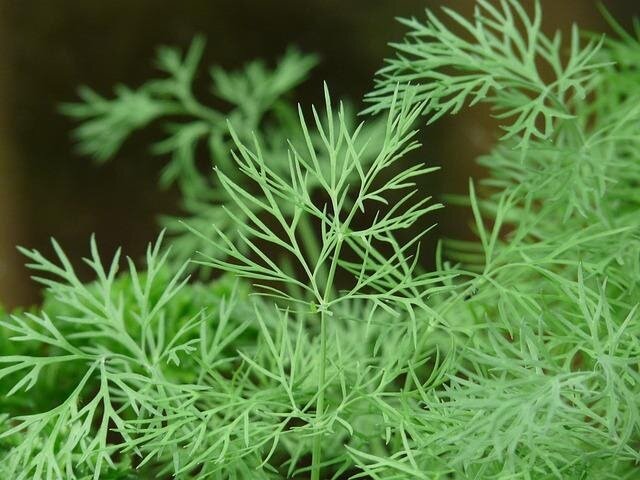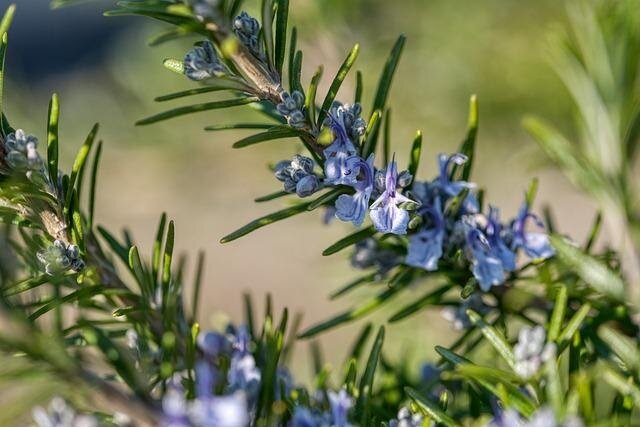Guest Post - 9 Edible Herbs for Your Garden
Growing edible herbs at your home is a pleasant experience! Say it as a hobby or as an interest to indulge yourself in growing herbs on your own is something to be proud of.
And it is good for your health physically and mentally too. You get fresh herbs to deepen the flavor of your dishes–plus, the health benefits are just staggering.
Plants lose some nutrition after a specific time of harvesting; it's a known fact. You might have experienced the difference between fresh and dried rosemary sprigs!
When you grow your herbs, you can use fresh herbs instantly without losing aroma, flavor, and nutrition. Here are our favorite choices of 9 healthiest edible herbs for your garden.
Parsley
Petroselinum crispum–Parsley is the most common culinary herb used in the entire world. It balances and enhances the flavors of any dish–it is more than just a garnish.
Parsley is abundant in vitamins A, C, and K, flavonoids, and minerals. We can use it as a mouth freshener; parsley prevents cell damage, supports bone health, and aids digestion.
Parsley doesn’t need much maintenance to grow. You can grow it under full to partial sun. The soil should always be moist and not waterlogged in dry weather.
For best results sow seeds in fertile soil–the growth will be slower but will yield healthy plants.
Basil
Ocimum basilicum—Basil is an integral part of many Mediterranean cuisines and prominently features in most Italian cooking, which goes into pasta, pizzas, salads, and sauces. It provides nutrients such as Vitamin K and A, micronutrients as calcium, iron, and manganese.
Basil helps in fighting infections, reducing blood pressure and sugar; supports liver health, and is anti-aging.
Basil needs warm weather to thrive–it could not withstand cold weather or frost. In winter, you need to take the plant indoors to help them survive.
Basil needs fertile and well-drained soil with the full sun, with warmth to grow.
Chamomile
Matricaria chamomilla—Chamomile is well-known for its herbal teas and widely consumed all around the world. The medicinal benefits of flowers are noted and used for thousands of years as traditional medicine.
There are volatile oils present in chamomile known to have sedative and anti-inflammatory properties, helps indigestion, relieve stress, and support the female reproductive system.
Chamomile is easy to grow; they have very low maintenance. They can grow in any soil type and can survive unstable weather.
The only requirement to keep in mind–chamomile plants die in waterlogged soil.
Marijuana
Cannabis sativa— We have been using cannabis varieties like marijuana and hemp in making cloth, paper, oil, and food since the Neolithic age. The cannabis concentrates- cannabinoids present in marijuana that act on the endocannabinoid system of our body, which helps in regulating sleep, memory, mood, immune function, and pain management.
Marijuana plants usually flourish outdoors and need more attention than their counterparts. The soil should be a mix of sandy and clay - it should be moist and not wet.
The plants should receive a maximum of eight hours of daylight with warm conditions and not extreme weather.
For indoor growing of marijuana harvest, you need to have a light and temperature control system. There should be a designated space or room to grow the plants.
The quality of light will be a vital environmental factor to grow your weeds. You can get an affordable and efficient system, depending on your space.
You need to add an air system in your indoor setup, as plants need fresh air to flourish. Having climate control will add more efficiency in growing marijuana successfully.
Mint
Mentha longifolia–Mint has several varieties to grow in your garden. The use of mint is very popular in drinks and the culinary area.
Mint has an abundant source of Vitamin A, iron, manganese, folate, and antioxidants. We have been using mint as a mouth freshener since medieval times; it helps to ease symptoms of digestive disorders and effectively treats cold.
Mint is easy to grow herbs–they can withstand frost and cold weather. Their only requirement to grow is fertile and moist soil with plenty of sunlight.
Dill
Anethum graveolens—Dill is an herb found prominently in Eurasian cuisines. Dill is both a herb and spice! Are commonly used to enhance and amplify the aroma and flavors of various dishes.
Dill has a rich source of calcium, fiber, vitamin C and B6, iron, and magnesium. This herb can support heart health, lower blood sugar levels, fight infections, and support bone health.
Grow dill plants in moist soil with pH varying to acidic to neutral. You can place these plants in-between your garden where there is full sun.
They will help to attract good and beneficial insects to your garden.
Rosemary
Salvia rosmarinus—Rosemary is an evergreen herb used in culinary and as an ornamental plant for your garden. It has the most fragrant aroma that will suit your house and your food.
Rosemary is long known for its antioxidants and anti-inflammatory properties. The health benefits include–it supports cognitive function in the brain, aids digestion, detoxifies the liver, and supports heart health.
Rosemary is a drought-tolerant plant and can thrive in sunny and warm conditions. Soil conditions should be moist and well-drained.
Chives
Allium schoenoprasum—Chives belong to the family of garlic, onions, and leeks. Known as a ‘fine herb’ in French cuisine–this herb is versatile as every part is consumable.
For garnishes flowers, for enhancing flavors in dishes, leaves and bulbs are used. Chives are a rich source of minerals such as potassium, calcium, phosphorus, and Vitamin K, C, and A.
They have anti-cancer properties, aid sleep, and regulate nervous system functions.
Chives are easy to grow and are low maintenance herbs. You just have to place them in the pot into the partial shade with a minimum of 4 hours of sunlight a day.
Thyme
Thymus vulgaris—Thyme is quite popular in Mediterranean and Italian cuisine as a flavoring agent in soups, stews, and egg and vegetable dishes.
The flowers, leaves, and oil made from thyme are identified for their medicinal properties. The nutritional facts of thyme are rich in potassium, iron, calcium, and manganese; Vitamin B6, C, and A; phenolic antioxidants.
Thyme can lower blood pressure, is an excellent remedy to treat skin problems, and can fight various infections.
You can grow thyme from the propagation method. The plants are small, so you can place them in pots indoors where there is plenty of sunshine.
The soil should be moist and well-drained.
The bottom line is growing a garden full of useful and healthy herbs is simple. If you have a garden, you can start growing these herbs.
If you don’t have one–no worries, all you need is gardening supplies and plants.
Growing these edible herbs in your garden will give you fresh seasonings with maximum health benefits all year round!
Author Bio: Sophia Cooper is a thorough and meticulous Content Analyst passionate about helping businesses succeed. She commits herself to continuous learning and focuses on sharing ideas and techniques learned from her experiences. She is a passionate writer who loves to write in a concise manner so that the information is helpful for everyone.










